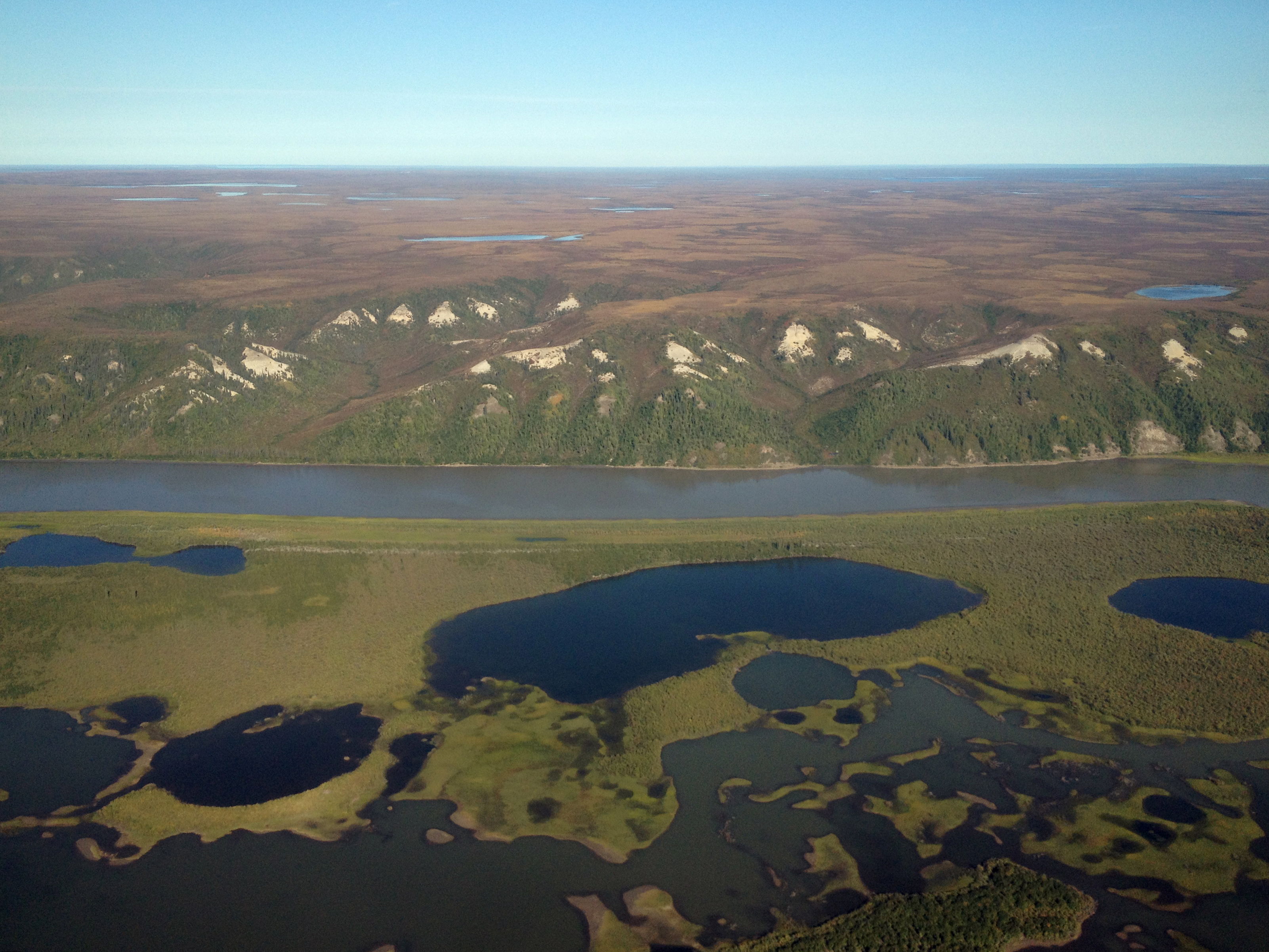Arctic permafrost thaw could set off sudden environmental changes
A new study found the thaw could happen so fast it would be difficult for Arctic residents to adapt.

Discussions of permafrost thaw in the Arctic have tended to frame it as a gradual process that could slowly change the future Arctic environment, proceeding at a pace that will allow humans time to adapt to new conditions.
But what happens if sections of thawing permafrost triggers immediate changes on the surface and in the atmosphere?
[Warmer, shorter winters have turned permafrost regions from carbon sink to source]
A new study by researchers from McGill University suggests that Arctic residents have to begin to think about this differently, because time is not on our side.
“What we came away with was a picture of alarming changes to climate driven by permafrost degradation,” says Bernardo Teufel, a PhD student at McGill University who co-wrote the study with engineering professor Laxmi Sushama.
They identified ways that melting permafrost will impact the climate of an entire ecosystem, a possibility that has drawn little research.
“As we started analyzing more closely climate model simulations for the Arctic region, we noticed abrupt changes in soil moisture, as well as abrupt increases in intense rainfalls with a probable increase in lightning and wildfires too,” Sushama said.
[Scientists amazed as Canadian permafrost thaws 70 years early]
Sudden environmental changes are more likely than gradual changes when permafrost disappears, the researchers said, summarizing their analysis of climate simulations stretched out to 2100.
One of the key lessons is that implications of permafrost thaw go way beyond soil conditions.
The study, published in Nature Climate Change, suggests such thaw could set off an environmental chain reaction.
“In regions with the permafrost table close to the surface, hydrological processes are confined close to the surface and the water storage capacity of soils is small, meaning that available liquid water has a strong influence on the soil moisture content closest to the surface,” they said.
In other words, permafrost acts as a barrier that keeps water near the surface. This helps keeps the surface moist and leads to greater spring runoff.
[Why lakes in Alaska’s Arctic national parks are disappearing — sometimes in a matter of days]
But once permafrost is gone, several things will happen almost at once. Within a matter of months, the decline in soil moisture could have a dramatic series of consequences, they said.
Spring runoff into rivers will decrease in places by upwards of 60 percent, as more water will be absorbed into thawed soil.
As the water sinks deeper into the ground, the surface will tend to dry out much faster.
Drier surfaces would mean lower relative humidity, increased lightning and a greater risk of fire.
“One region where the increase in fire danger is projected to be particularly large is northwestern Canada,” they said.
An area of about 220,000 square kilometers could see the risk of severe fires double as permafrost degrades and relative humidity drops.
“The fact that these changes are projected to occur abruptly further increases the challenges associated with climate change adaptation and potential retrofitting measures,” the authors said.
The disruption to the ecosystem will have consequences for human habitation and put roads, buildings and other infrastructure at risk.
“Given the abruptness of this change and that it is expected to occur with little or no warning, adaptation measures would need to be made very quickly to minimize impact,” they said.
“Diverse feedback processes result in permafrost degradation abruptly increasing the risk of intense precipitation, lightning frequency and fire severity, each of which poses unique threats to vulnerable northern ecosystems and human activities.”
The study concludes by saying that the risk of sudden changes will depend upon the rate of temperature increases caused by greenhouse gas emissions — which means that slowing down the temperature rise is the best bet for buying time for adaptation and mitigation.
Dermot Cole can be reached at de*********@***il.com.